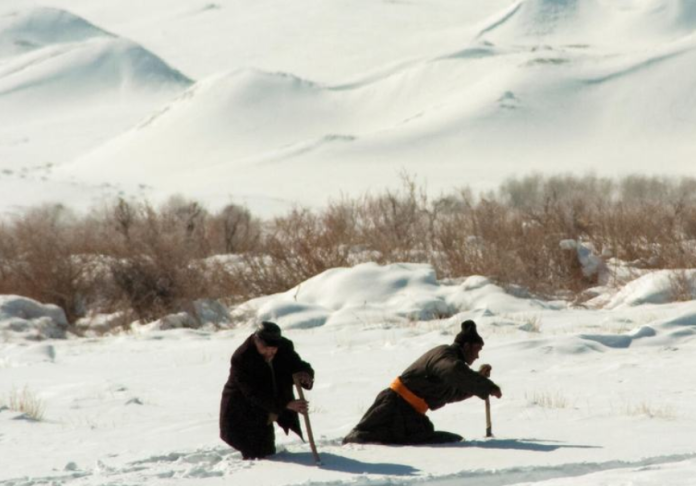Image: Andrew Cullen (UNICEF) Men use sticks to wade through deep snow in rural Khovd province in far-western Mongolia.
The United Nations is reporting that 90 percent of Mongolia is experiencing extremely cold temperatures and heavy snow, reports CGTN news, which wrote:
Temperatures plummeted to minus 46 degrees Celsius on Monday [February 19]. U.N. agencies say the freezing conditions and heavy snow puts 90 percent of the country at high risk. Known locally as a “dzud”, the slow-onset conditions freezes the ground and prevents animals from reaching pasture. The unique phenomenon also puts particular strain on Mongolia’s integral livestock-based agriculture. It is estimated that 190-thousand herder households are contending with inadequate feed supplies and price increases.
Mongolia began to experience extremely low temperatures in January, when mountainous regions saw temperatures dip to -50℃. The low temperatures have spread and persisted for weeks on end now.
BNN calls this a “winter to remember,” reporting that this year snowfall is the heaviest and most widespread since 1975.
This year’s harsh winter conditions come back-to-back with a similarly cold and snowy winter last year which resulted in thousands of cattle and sheep dead from starvation and cold. Herders in the nation lost up to 75 percent of their livestock. The livestock loss is continuing this year, according to BNN which says:
The harsh reality of this extreme weather condition has led to the loss of 667,841 livestock, a vital resource for many of Mongolia’s inhabitants. This loss not only signifies a direct hit to the food supply and financial stability of numerous families but also raises concerns about long-term food security and the socio-economic fabric of rural communities.
To mitigate the losses this year, CGTN News quotes government officials saying that the U.N. is “sending hay, medicine, food, and fuel to provincial and local areas at high risk. The government will arrange to deliver 25,000 to 26,000 tonnes of hay to herders and families in the most dire situations.”


